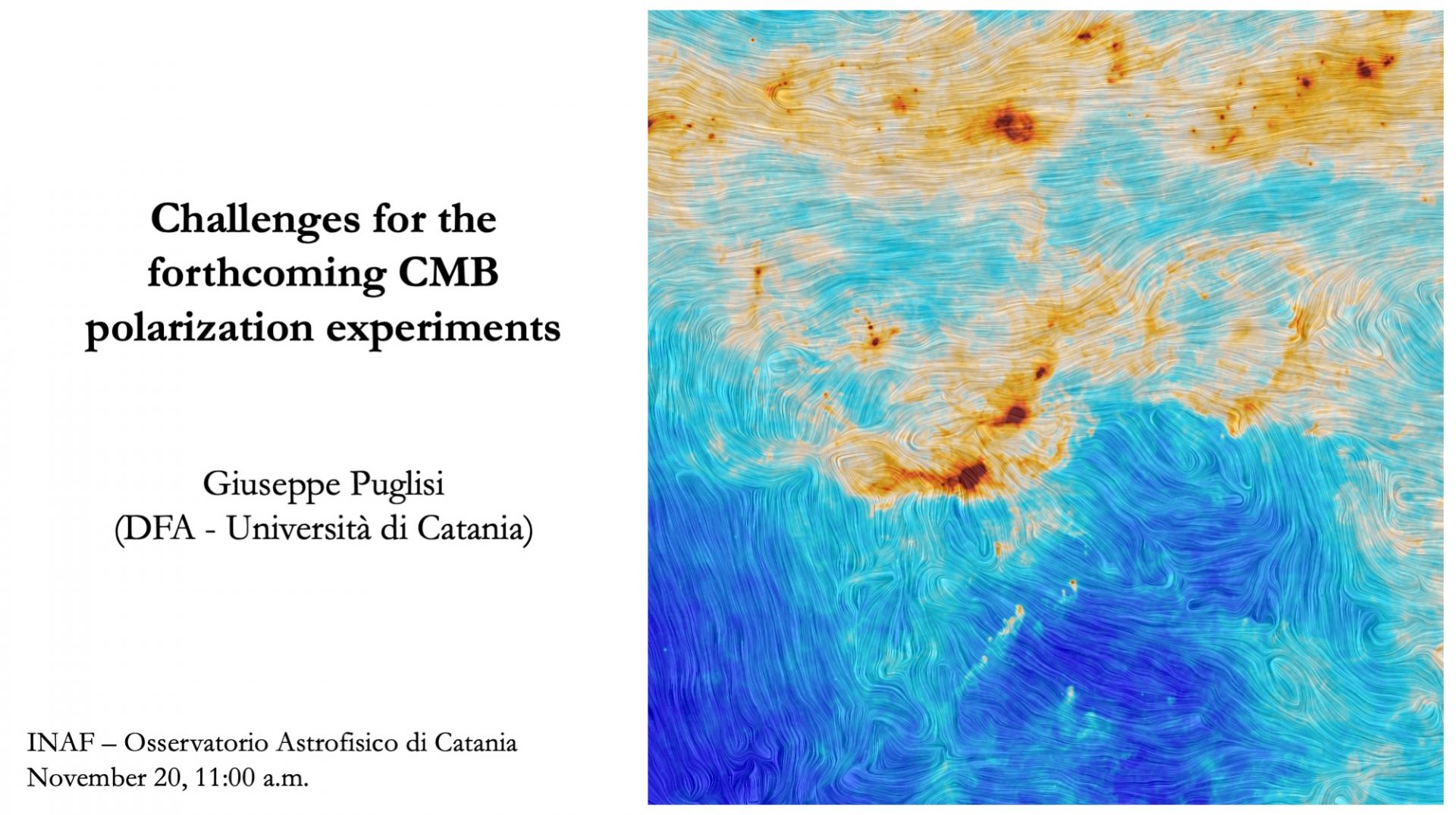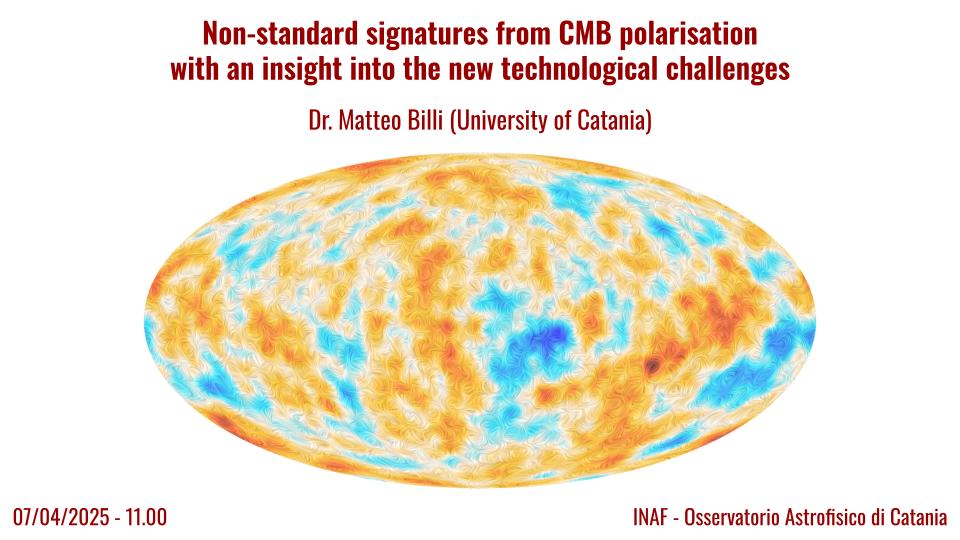Challenges for the forthcoming CMB polarization experiments
Sede A. Riccò Via Santa Sofia 78, CataniaOne of the major challenges in the context of the Cosmic Microwave Background (CMB) radiation is to detect a polarization pattern, the so called B-modes of CMB polarization, that are thought to be directly linked to the space-time fluctuations present in the Universe at the very first instants of life. To date, several challenges have prevented to detect the B-modes partly because of the lower sensitivity of the detectors. Our own Galaxy is observed in this context as a foreground contamination. However the awareness of improving the modeling of its polarized emission has been constantly increase not only to assess the cosmological signals but also to provide new insights onto the Galactic magnetic field probed with the Galactic polarized emissions, e.g. synchrotron and thermal dust. This is particularly relevant in order to better characterize the foreground contamination for future CMB experiments (e.g. SO, LiteBIRD, CMB-S4 ), where unprecedented polarization sensitivities are expected to be achieved in the coming decades.



